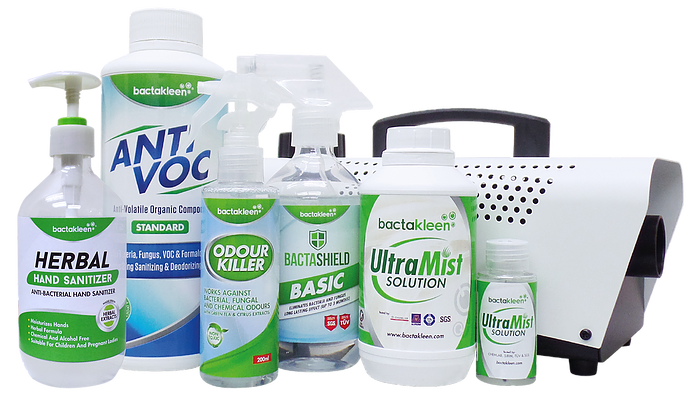- World's No.1 selling Anti Bacterial Treatment System!
- +971 56 3304466
- +971 55 9676070
- info@bactakleen.ae
Sterilization, Cleaning, and Disinfection: What Are the Determinants?

Automotive Portable Antibacterial Disinfectant Fog Machine
October 30, 2020
Can Vinegar be used as a Disinfectant?
November 5, 2020Management of contaminants plays one integral role in infection control and hygiene. All key touchpoints must be considered the critical reservoirs for pathogenic germs. If inadequately handled, it can cause cross-contamination as well as increase infection rates. Of course, such microorganisms are transmissible through the air, direct contact, among various vectors. Contagious microorganisms contribute to the risks of further infections that put everyone’s health at risk.
There are programs routinely implemented at home and businesses in all settings to prevent and control the spread of infectious diseases. Therefore, the decontamination of surfaces calls for following the best practices that guarantee infection management.
Perhaps you frequently hear the terms “sterilizing, cleaning, and disinfecting.” But have you ever wondered what their exact meaning is or how do you differentiate them from another? Here is an in-depth dive into the determinants of the methods used by cleaning service providers.
Chain of Infection
For germs to become infectious, a series of actions must happen, enabling the microorganisms to be harbored in someone. Often known as the chain of infection, this model represents the interactions between various factors resulting in the acquisition of infectious diseases. Professional cleaners utilize this system for guidance when offering services. That entails “breaking” the chain at the transmission mode to prevent further infections.
Weakest Link
Pathogenic contaminants often need a transmission means to travel from the source to the susceptible individual. Because of this extent of the vulnerability, the spread of the disease-causing elements can be interrupted through many methods quickly. Disruption encompasses the proper utilization of personal protective equipment, hand washing, disinfection of surfaces, and instrument sterilization.
Methods of Eliminating Pathogens Cleaning
The most basic hygiene maintenance measure and the particularly imperative on every environment and surface are cleaning. One key aim of this encompasses the removal of all visible and loose dirt. Essentially, this process, if thoroughly done, removes microorganisms with about 90% efficacy. Removing dirt eliminates the breeding-medium for surviving germs; otherwise, all can be used on the cleaned surfaces.
Disinfection
Disinfection is achievable using disinfectants available as alcohol, chlorine, and hydrogen peroxide. While no ideal one exists, the uniqueness makes each fit the intended and specific purpose. The solutions must be chosen based on the situation to be considered appropriate and satisfactory as per the application. The critical elements to finding the best ones encompass the rapid activity and lack of toxicity on the pathogenic microorganisms. In general, the selected disinfectant should be used at the right time and concentration to kill germs, render the surfaces safe, or pathogen-free to eliminate cross-contamination.
Sterilization
Sterilization of surfaces destroys every microorganism, therefore preventing associated infections. This practice is performed on already clean objects and using sound principles. The surfaces must be resistant to the methods used to withstand such a process.
Break the Links using Bactakleen Products
In the event of an infectious disease outbreak or everyday life routines, it is imperative to keep the right resources and knowledge. That means you can interrupt and eliminate the range of transmission modes plus minimize the susceptible person’s risks of acquiring such diseases. This level of hygiene can be achieved by applying effective cleaning, disinfection, and sterilization protocols.
Bactakleen understands that your home requires effective disinfection techniques. Here you will find the best products for use in limiting the potential infectious disease transmission.




